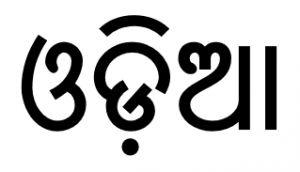Language/Odia/Grammar/Word-Formation
| ◀️ Basic Syllable Formation — Previous Lesson | Next Lesson — Greetings ▶️ |
Introduction[edit | edit source]
In this lesson, we will explore the process of word formation in the Odia language. Understanding how words are formed is crucial for building a strong foundation in any language. By learning how to form words in Odia, you will be able to expand your vocabulary and communicate more effectively. This lesson is part of the "Complete 0 to A1 Odia Course," designed to take you from a beginner level to an A1 level in the language.
Basic Syllable Formation[edit | edit source]
Before we dive into word formation, let's first understand the basics of syllable formation in Odia. Syllables are the building blocks of words and play an important role in the phonetic structure of the language. In Odia, each syllable consists of a consonant followed by a vowel or a vowel alone. Let's look at some examples:
| Odia | Pronunciation | English |
|---|---|---|
| ମ | ma | mother |
| ତ | ta | tap |
| ପା | pā | father |
| ରେ | re | sun |
As you can see from the examples above, each syllable consists of either a consonant followed by a vowel or a vowel alone. It is important to note that in Odia, vowels can be written both as independent characters and as diacritic marks on consonants.
Word Formation[edit | edit source]
Now that we have a solid understanding of syllable formation, let's explore how words are formed in Odia. Odia words are typically formed by combining multiple syllables together. These syllables can be a combination of consonants and vowels, or they can be standalone vowels. Let's look at some examples:
Combining Syllables[edit | edit source]
To form words in Odia, we can combine multiple syllables together. Let's take a look at some examples:
| Odia | Pronunciation | English |
|---|---|---|
| ମାତା | mātā | mother |
| ପିତା | pitā | father |
| ବାଲକ | bālaka | boy |
| ବାଲିକା | bālikā | girl |
In the examples above, we can see that by combining syllables, we can form complete words with specific meanings. It is important to note that the pronunciation of each syllable remains the same when combined into a word.
Standalone Vowels[edit | edit source]
In addition to combining syllables, Odia also allows for standalone vowels to form words. Let's take a look at some examples:
| Odia | Pronunciation | English |
|---|---|---|
| ଇ | i | yes |
| ଉ | u | you |
| ଏ | e | this |
| ଓ | ō | that |
In the examples above, we can see that standalone vowels can also function as words in Odia. These words are used to convey simple meanings or expressions.
Cultural Insights[edit | edit source]
The formation of words in Odia is deeply connected to the cultural heritage of Odisha. The language has a rich history and is influenced by various regional variations and historical events. It is interesting to note that Odia script, known as "Odia Lipi," has its roots in the ancient Brahmi script. Over the centuries, Odia has evolved and adapted, incorporating influences from Sanskrit, Persian, and other languages.
In some regions of Odisha, there may be slight variations in word formation and pronunciation. These regional differences add to the diversity and beauty of the Odia language. It is important to embrace and appreciate these variations, as they are an integral part of the cultural fabric of Odisha.
An interesting cultural fact about Odia is its close association with Lord Jagannath, a deity worshipped in the state. The Odia language is often referred to as "Jagannath Odia" due to its deep connection with the rituals and traditions surrounding Lord Jagannath. The influence of Lord Jagannath can be seen in various aspects of Odia culture, including language, literature, and art.
Practice Exercises[edit | edit source]
Now, let's put our knowledge of word formation in Odia to the test with some practice exercises. Try to form words using the given syllables or standalone vowels. Solutions and explanations will be provided after each exercise.
Exercise 1: Form words using the following syllables:
- କା
- ତେ
- ରେ
Exercise 2: Form words using the following standalone vowels:
- ଅ
- ଆ
- ଇ
Exercise 3: Combine the following syllables to form words:
- ମା + ତା
- ପି + ତା
- ବା + ଲକ
Solutions[edit | edit source]
Exercise 1:
- କାତା (kātā) - shoulder
- ତେଲ (tela) - oil
- ରେଶମ (reṣama) - silk
Exercise 2:
- ଅମା (ama) - mango
- ଆମ (āma) - ours
- ଇଉ (iu) - so
Exercise 3:
- ମାତା (mātā) - mother
- ପିତା (pitā) - father
- ବାଲକ (bālaka) - boy
By completing these exercises, you have practiced forming words using syllables and standalone vowels in Odia. This will help you expand your vocabulary and improve your overall language skills.
Conclusion[edit | edit source]
In this lesson, we explored the process of word formation in the Odia language. We learned how to form words using syllables and standalone vowels. By understanding the basics of word formation, you can further enhance your language skills and communicate more effectively in Odia. Keep practicing and exploring the beauty of the Odia language, and you will continue to make progress in your language learning journey.
Sources[edit | edit source]
Other Lessons[edit | edit source]
- Present Tense
- Plurals
- Consonants
- Adjectives
- Negation
- Questions
- Subject Verb Object
- Conditional Mood
- Vowels
- Basic Prepositions
| ◀️ Basic Syllable Formation — Previous Lesson | Next Lesson — Greetings ▶️ |

